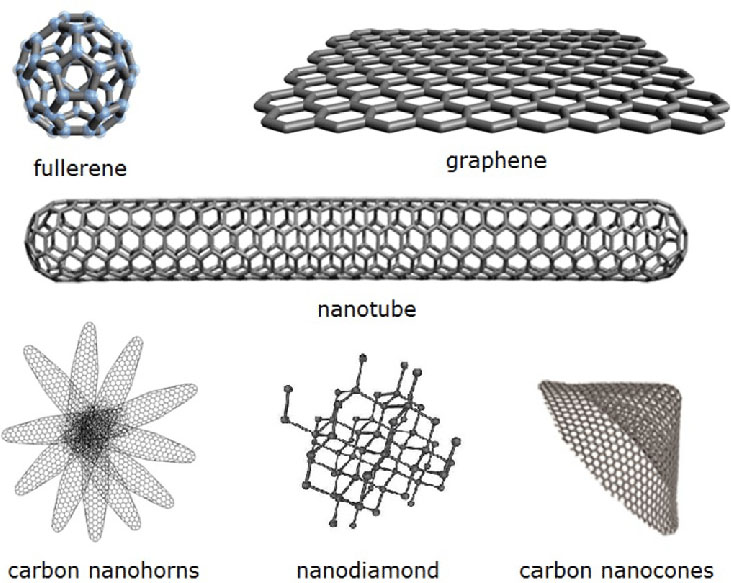Understanding Carbon Allotropes: Essential Building Blocks in Nanotechnology
Definition: Carbon allotropes are forms of carbon that differ in their physical and chemical properties due to variations in the arrangement of carbon atoms. The versatility of carbon allows it to form a variety of allotropes, including diamond, graphite, and carbon nanomaterials like fullerene, carbon nanotubes, and graphene. These materials play a pivotal role in the development of nanotechnology, offering unique properties that are exploited in a wide range of applications.

Types of Carbon Allotropes
Each carbon allotrope has a unique structure that imparts distinct physical and chemical properties:
- Diamond: Known for its exceptional hardness and thermal conductivity, diamond consists of carbon atoms arranged in a tetrahedral lattice.
- Graphite: Characterized by its layered structure, graphite is soft, conducts electricity, and serves as a lubricant.
- Fullerenes: These molecules are composed of carbon atoms forming closed cages. Buckminsterfullerene (C60), resembling a soccer ball, is a well-known example.
- Carbon Nanotubes (CNTs): Cylindrical nanostructures with remarkable strength, electrical conductivity, and thermal properties. CNTs can be single-walled or multi-walled.
- Graphene: A single layer of carbon atoms arranged in a two-dimensional honeycomb lattice, graphene is renowned for its strength, flexibility, and conductivity.
Applications of Carbon Allotropes in Nanotechnology
The unique properties of carbon allotropes have led to their use in a multitude of nanotechnology applications:
- Electronics: Graphene and carbon nanotubes are used in the development of faster, more efficient electronic devices.
- Materials Science: Composite materials incorporating carbon allotropes exhibit enhanced strength, durability, and thermal properties.
- Energy: Applications in energy storage and conversion, including batteries and supercapacitors, benefit from the high conductivity and surface area of carbon allotropes.
- Biomedicine: Fullerenes and carbon nanotubes are explored for drug delivery systems, imaging, and as biosensors due to their biocompatibility and functionalizable surfaces.
Challenges and Future Directions
Despite their potential, the application of carbon allotropes faces challenges related to synthesis, scalability, and integration into existing technologies. Ongoing research aims to overcome these obstacles, paving the way for advanced nanomaterials and devices.
The exploration of carbon allotropes continues to be a dynamic field of study, with scientists constantly discovering new forms and applications. As our understanding deepens and technological capabilities advance, carbon allotropes are set to play a crucial role in the future of nanotechnology and beyond.
Further Reading
Critical Reviews in Solid State and Materials Sciences, Magical Allotropes of Carbon: Prospects and Applications
